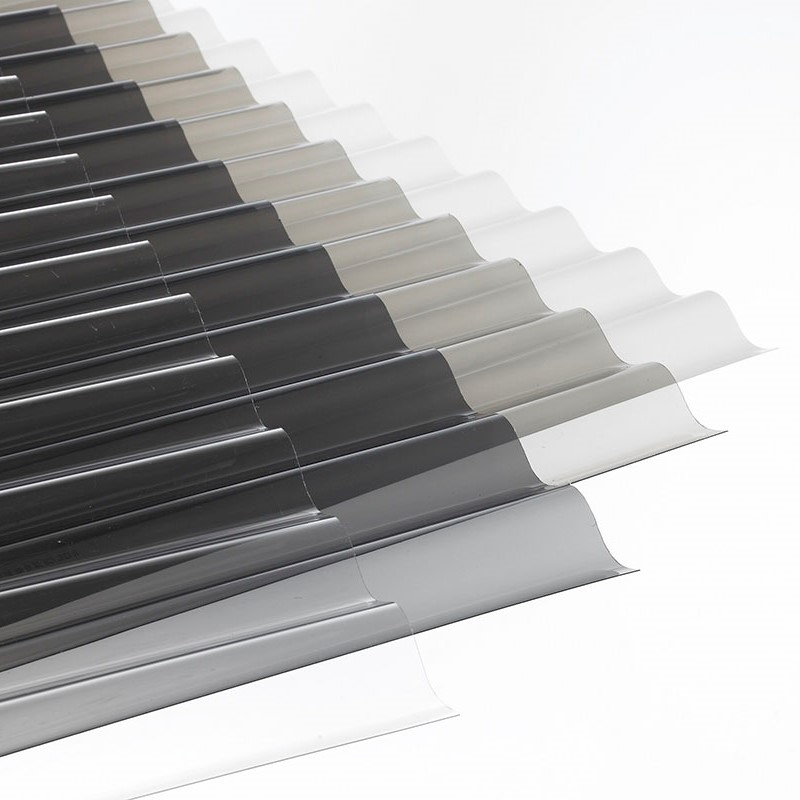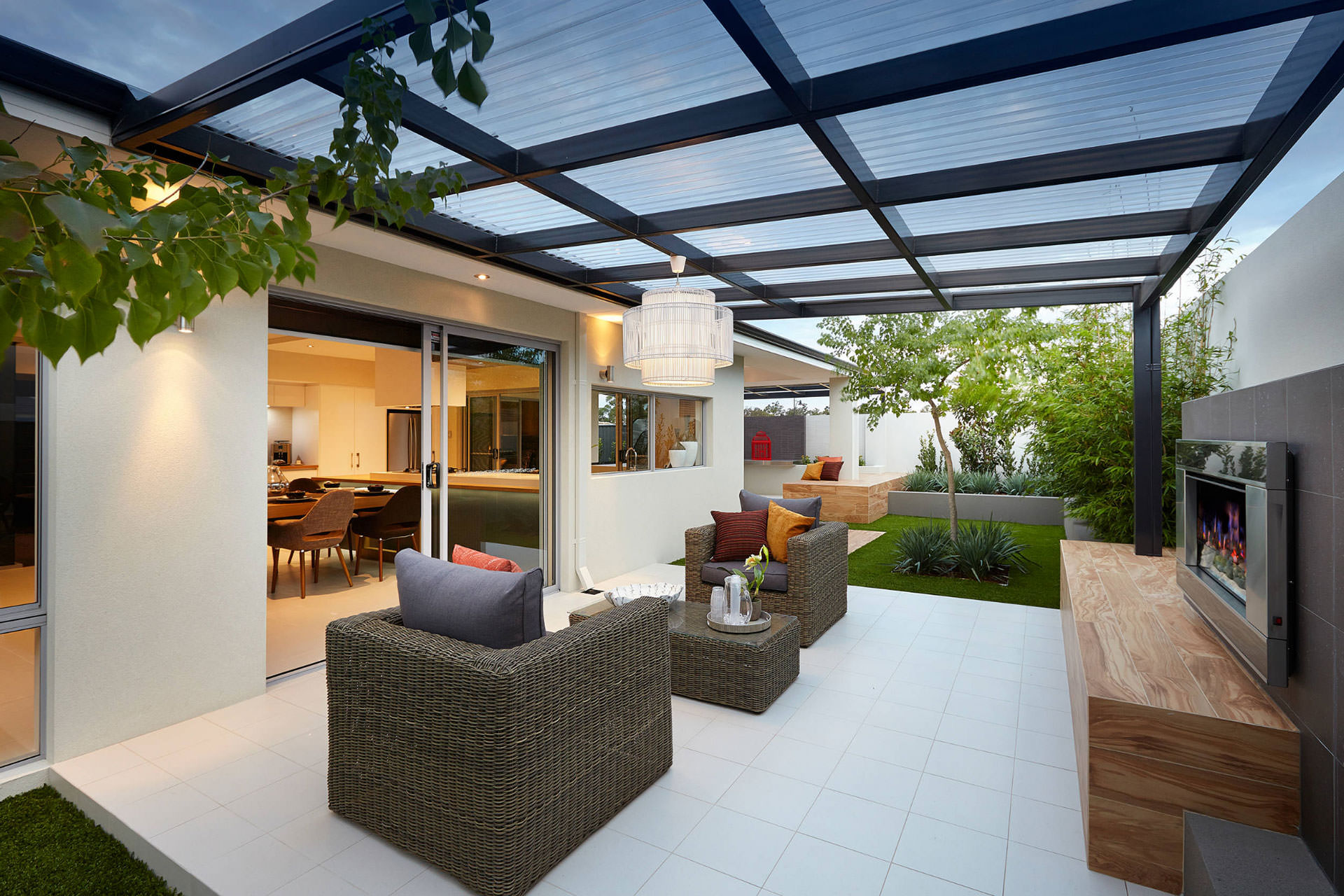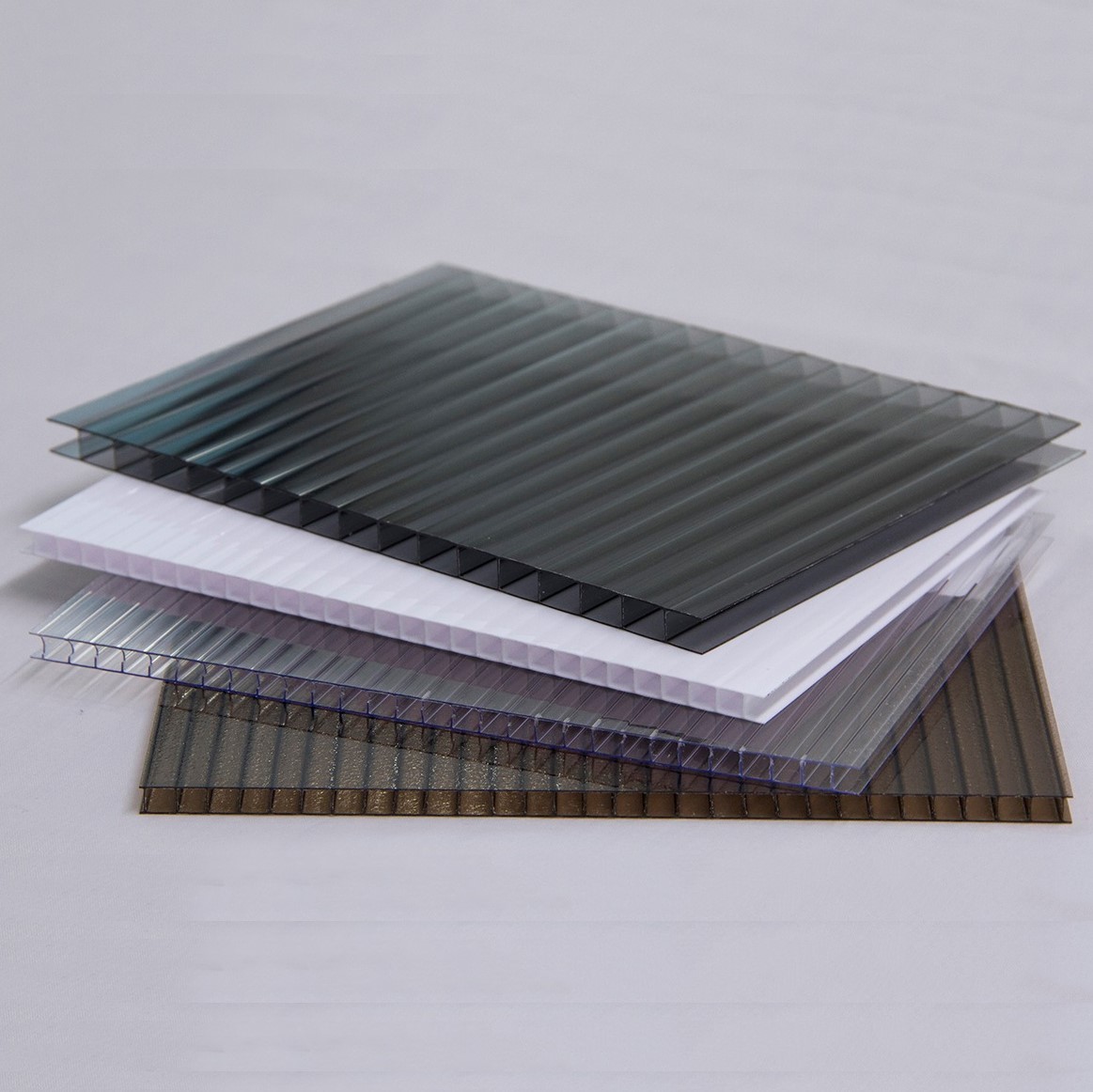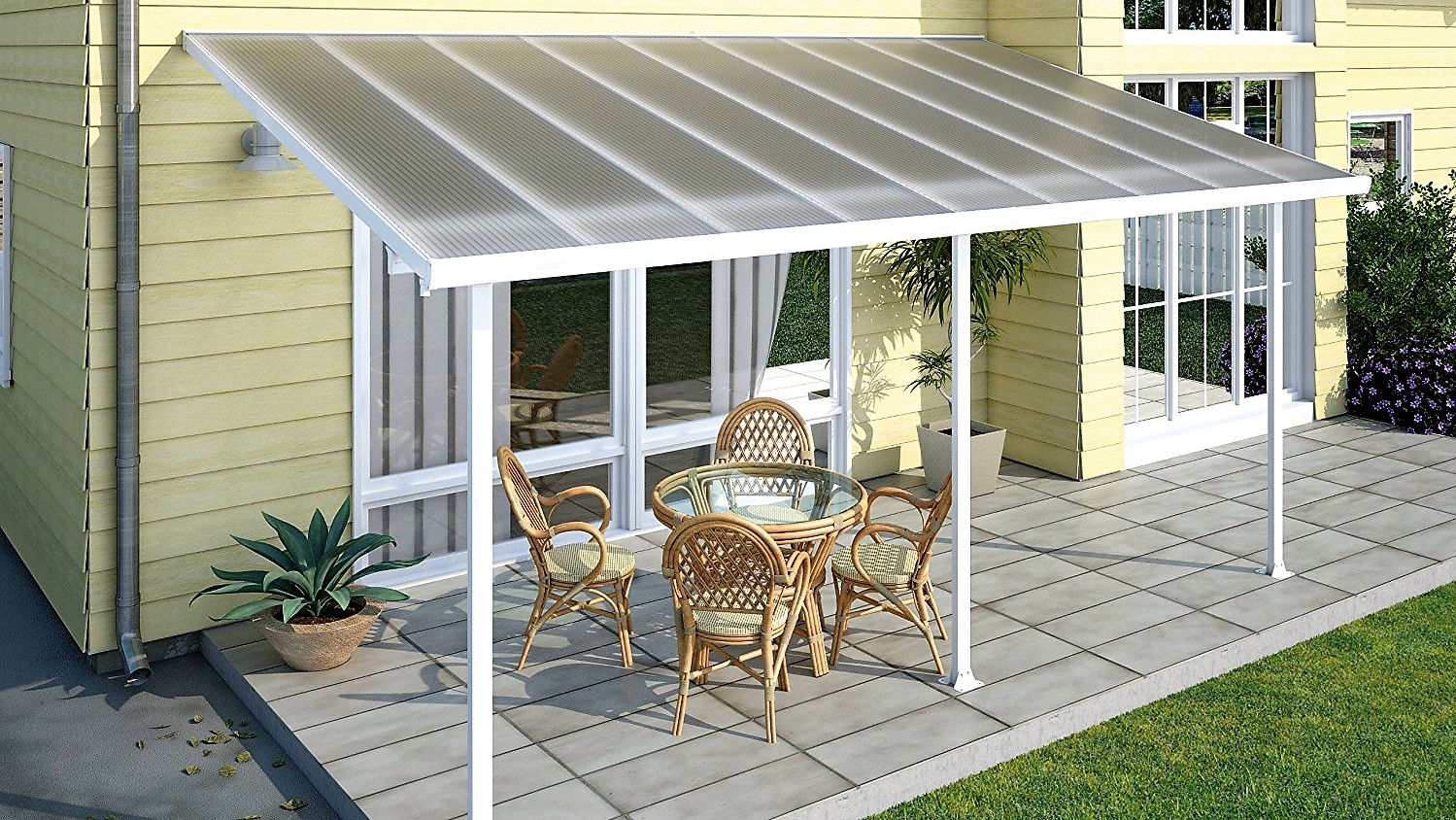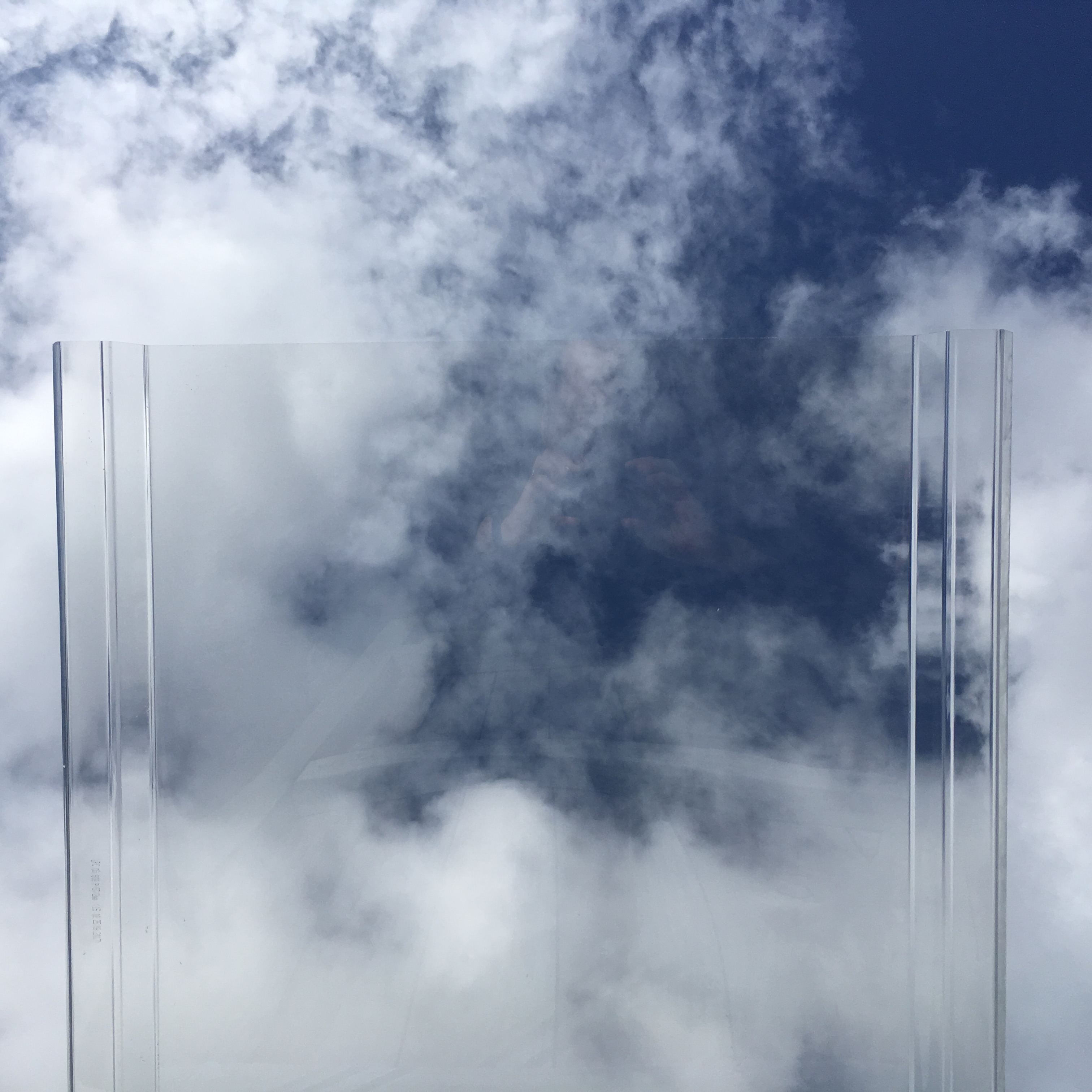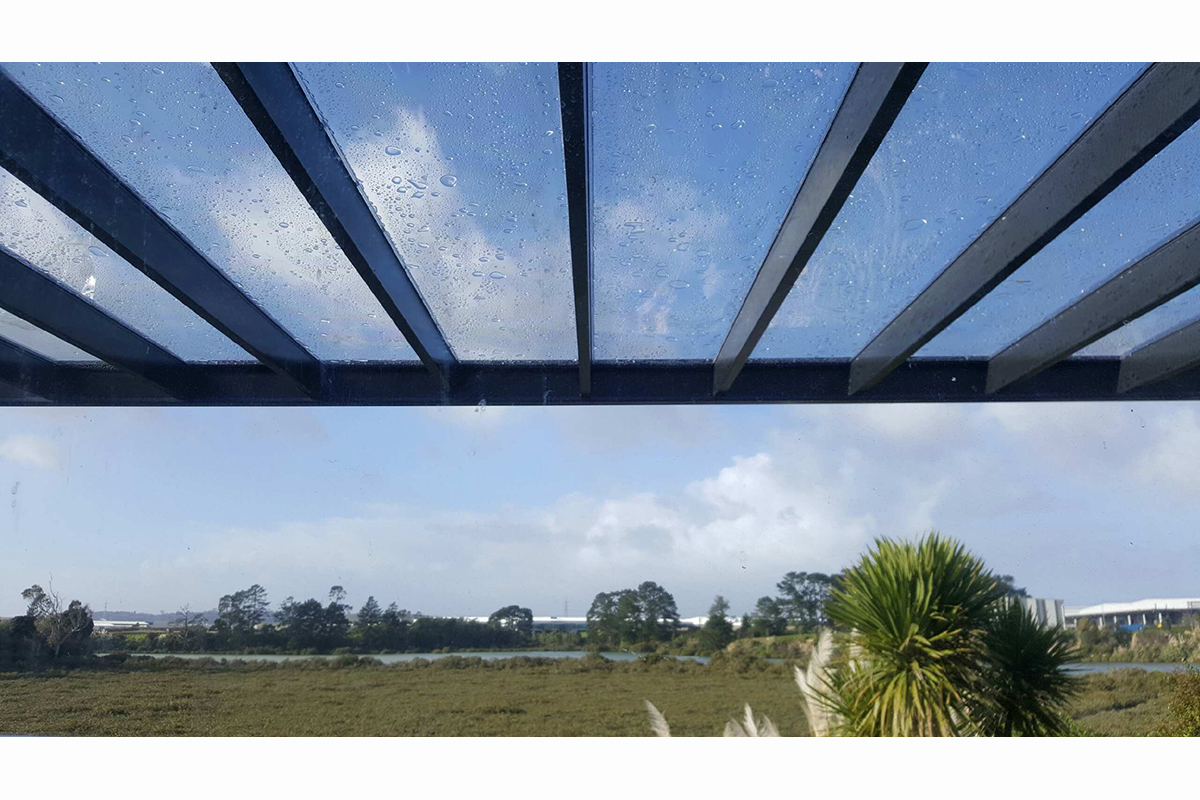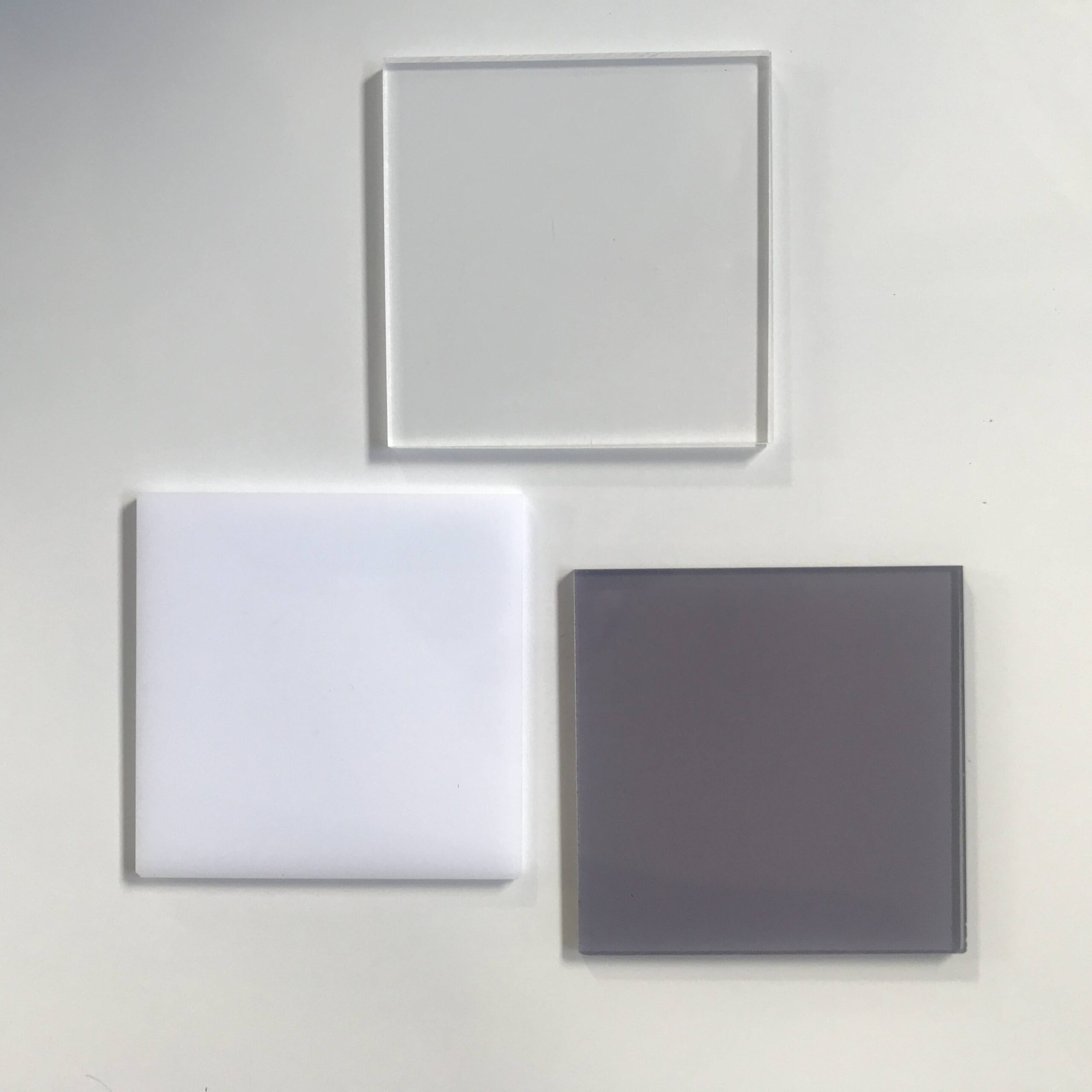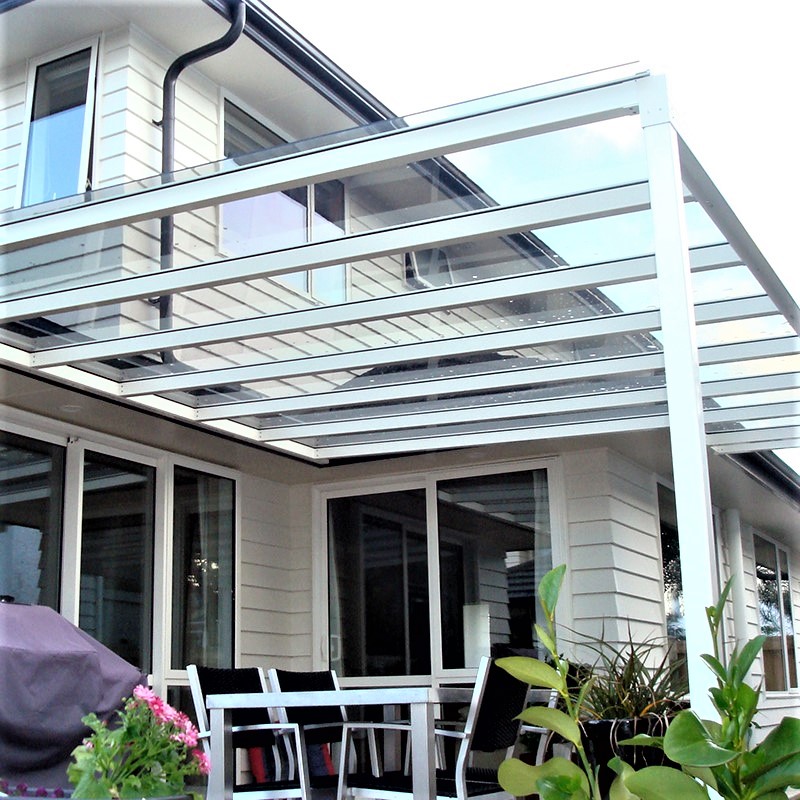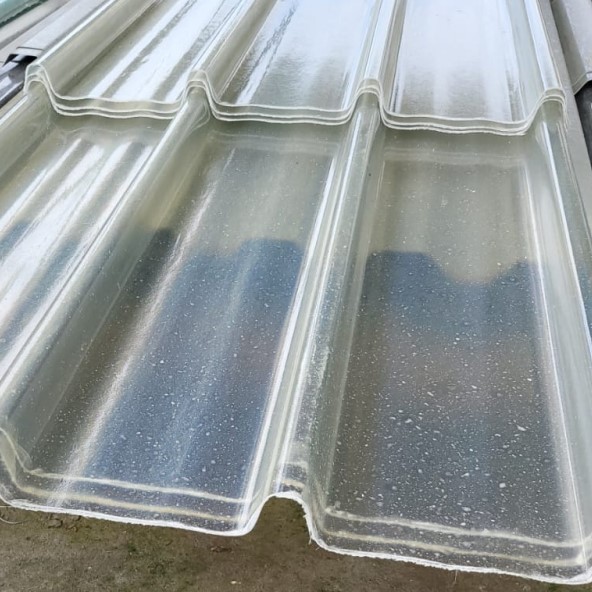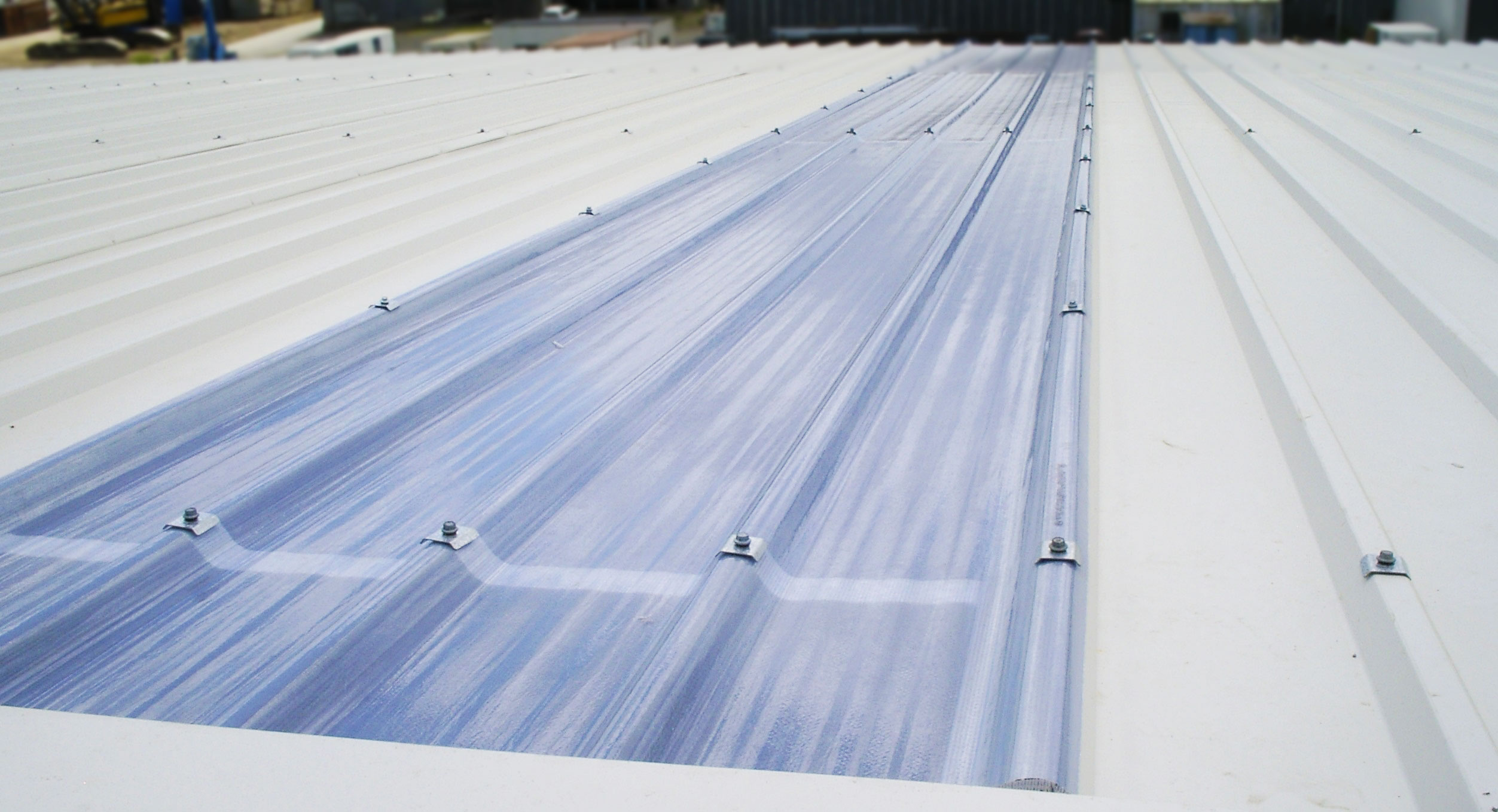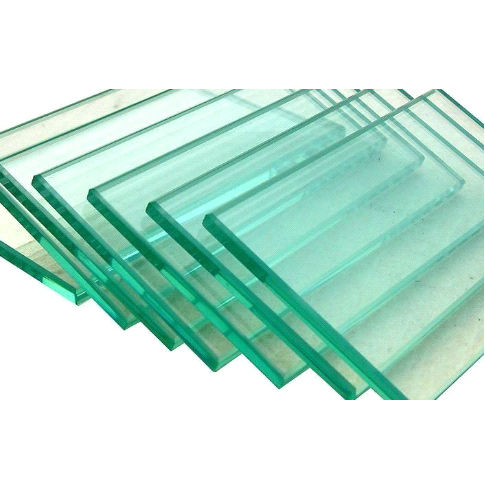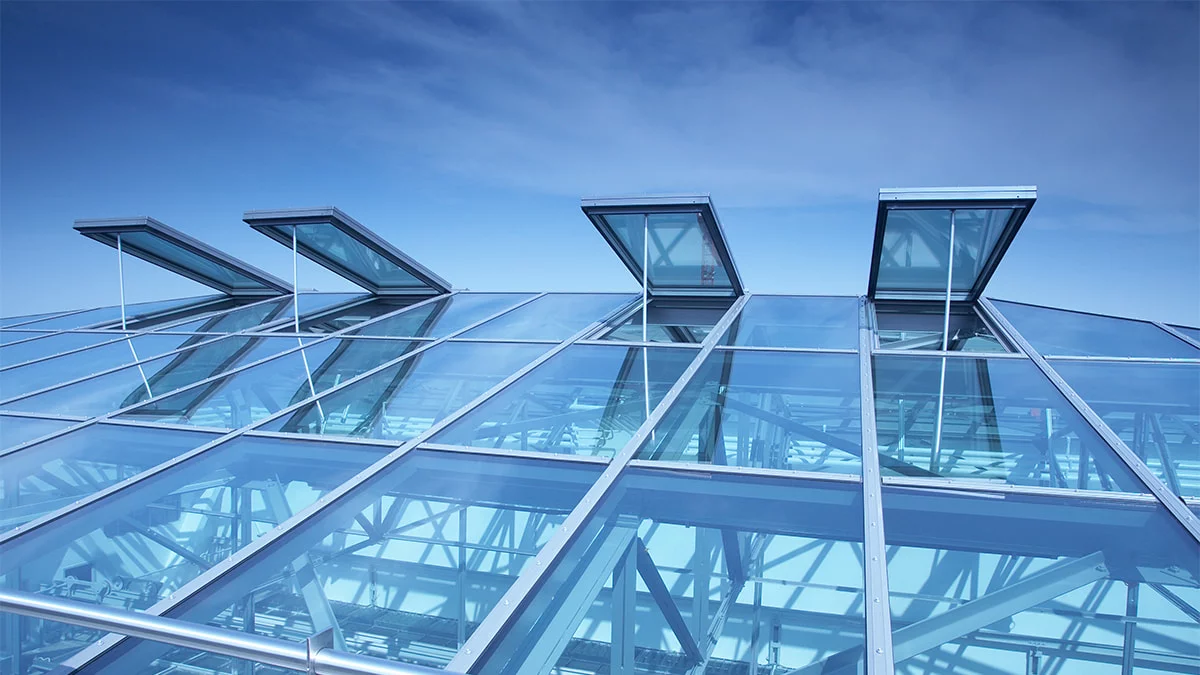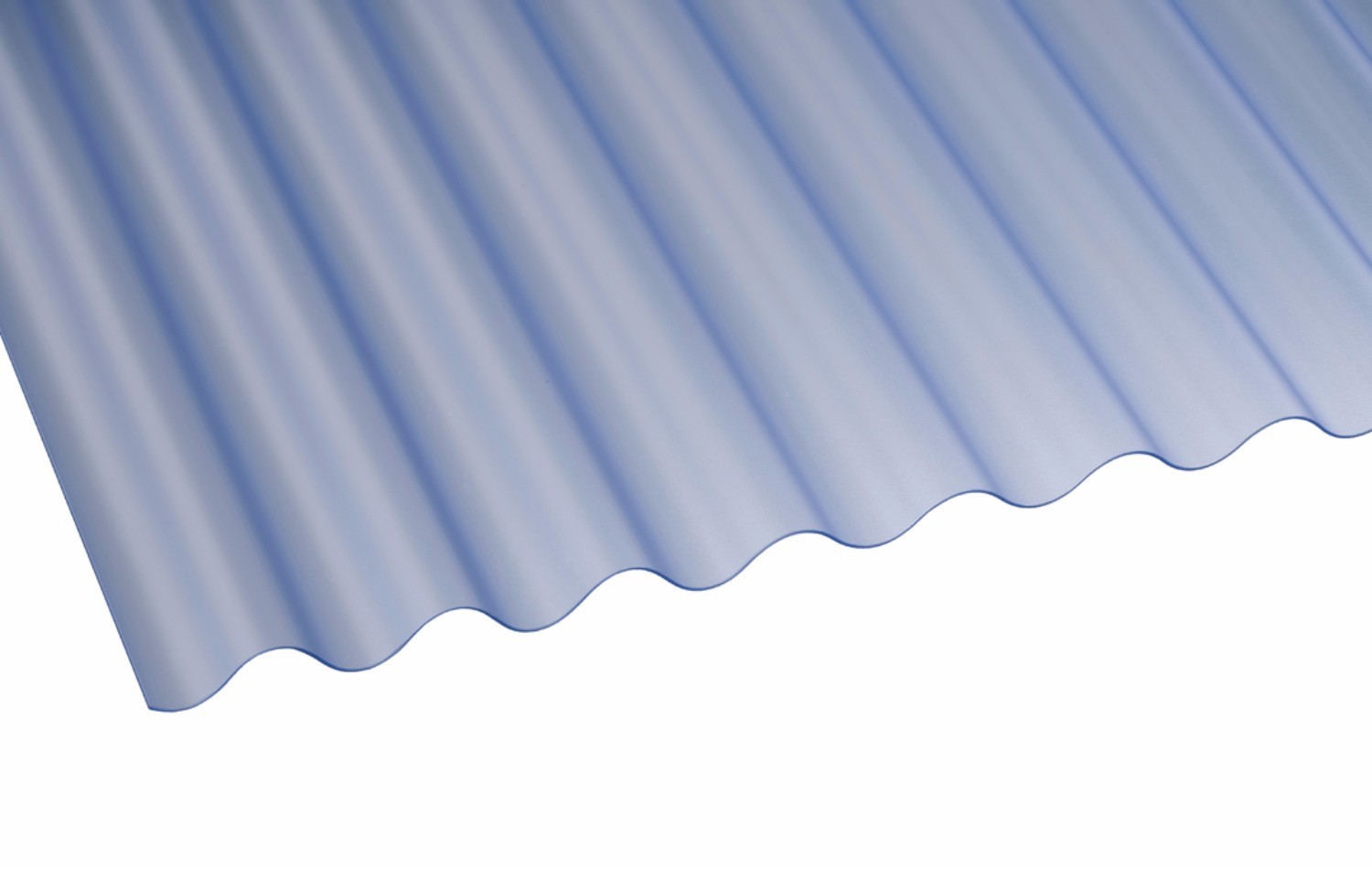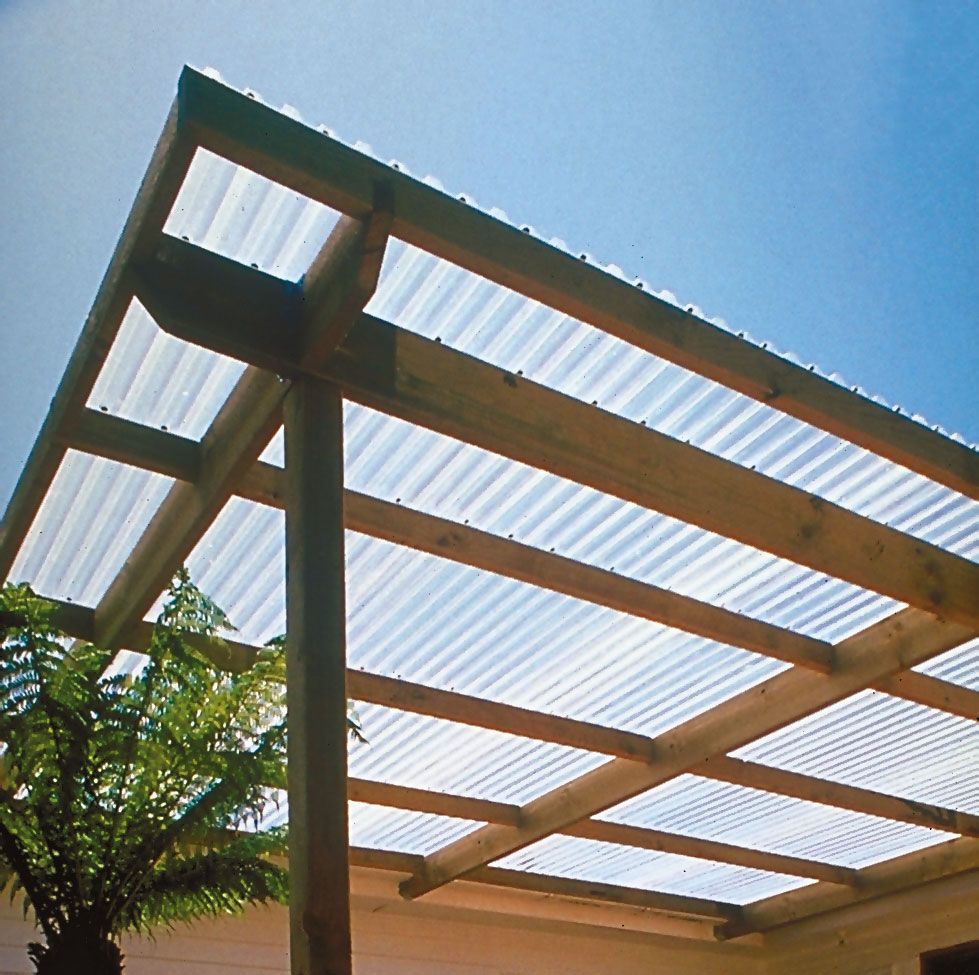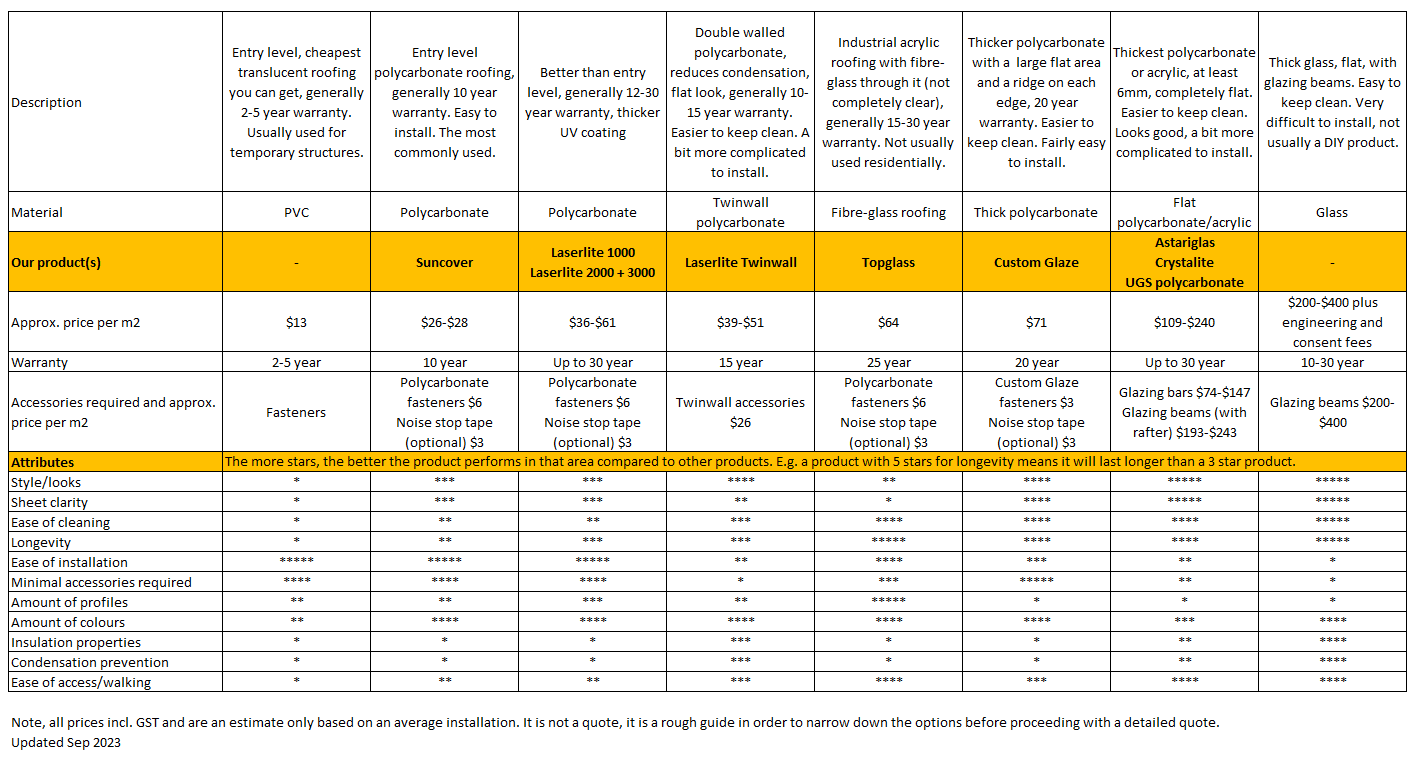How to choose clear roofing sheets in NZ
So you want a clear roof over your deck or pergola? Are you having trouble deciding on which type of material and structure to go for? We hear you. There are so many different options these days, from cheap PVC to top end glass, and everything in-between. This guide is designed to help you navigate those options.
If you'd rather see this guide as a video, here it is! If you want to read it instead, keep scrolling.
There are a few considerations you'll want to think about first. Once you've decided on what's important to you it should be a lot easier to narrow down those translucent roofing options. Here is what you need to be thinking about:
- Your budget
- What sort of look/style and structure you like
- How much light you want through
- How much slope (fall) you'll have on the roof
- How easy it is to install
- Which accessories you need
- Whether you need consent
- Cleaning and access to the roof
- Flexibility, movement and noise of the sheets
- Wind, coastal and snow zones
- Condensation
- What to do with rain run off
- Flashing and sealing the roof
- Future proofing it
We'll talk about each of these considerations in depth, below the guide. There's quite a bit of information here, so we also have a handy table showing how each of the different products compare to some of the most important considerations.
Your budget
Knowing how much you want to spend overall can help you quickly narrow down your options. Yes, everyone would like the look of glass, but in many cases that's simply too expensive. Our guide has a rough per square metre price of each product, and the accessories required. This doesn't include the cost of the structure if it's not already there.
Think about how long you're going to be at that property. Are you only there for a short time, or for the foreseeable future? Another thing to consider is installation cost. If you can't install yourself, and need an installer, that can easily double the price of the project.
What sort of look/style and structure you like
This is also one of the top considerations. Often it depends on what it's going to be used for. If it's an outdoor social area you want it to look quite nice. If it's simply a storage area at the back of the house, style probably isn't so important. In general, the flatter products such as Custom Glaze or flat acrylic/polycarbonate look the nicest, and they require a more minimal structure. The corrugated and other profiled sheets need more purlins and support structure.
Sometimes people will want to match the roof of their house, e.g. if the house has a corrugated iron roof. This can be a consideration, but also think about what looks best for the clear roof as a standalone structure. Often you won't ever be looking at the two roofs at the same time (especially if you're underneath it), so a different style is fine.
How much light and heat you want through
All of our products have three to four different colour options. This gives you some flexibility with how much light you can let through the sheets. From completely clear, to tinted, to an opaque frosted sheet which still lets light, but blocks some heat.
Think about where the windows of the house are, and if the roof will block any light coming into those. The other thing to think about is how much light will come through the sides of the structure. Often there's more light than you think. Even if your new roof let no light through at all, there would still be light coming in from the sides.
How much slope (fall) you'll have on the roof
In many cases, there is a minimal pitch on the structure. If possible, you want as much fall as possible. This will help with water run-off, sediment not building up, and longevity of the roof. All of our products require at least five degrees slope, but the more the better. We recommend at least ten degrees for Custom Glaze.
How easy it is to install
In general, the cheaper the product is, the easier it is to install. The entry level corrugated polycarbonate has been around for years so every builder or DIYer has probably come across it. As you get up to the Twinwall and flat acrylic/polycarbonate, more care and expertise is required. It can still be a DIY product, but there are a few more things to think about.
Which accessories you need
The cheaper profiled products don't need much, mainly screws and noise stop tape. The flat acrylic or polycarbonate also don't require a lot, mainly glazing (joining) bars. The Twinwall requires the most accessories, due to its double wall and flutes needing to be sealed. The guide gives an indication to cost of accessories as well.
Whether you need consent
This really depends on the size, height, location to boundary and buildings, and some other factors. We're unable to advise on any consent questions, but you can check with your local council as to what's allowed or what needs to be consented. Many council websites have a guide or even a consent checker tool on their website. Glass will not only need a consent, but an engineer to certify the structure, which is why most people don't use it.
Cleaning and access to the roof
Being able to see through the roof and let light through is great, but it does mean that you see the dirt and sediment building up as well. All types of clear roofing will require regular cleaning and maintenance. So think about how you're going to access the top of the roof once it's up. You can use walk boards (on top of a clean drop cloth) if necessary. Take care not to scratch the roof. A soft cloth with soapy water is generally the best for cleaning. The flat acrylic/polycarbonate sheets are easier to clean and access. The cheaper profiled sheets will have an overlap, which is easier to install, but harder to clean as sediment can get in the overlaps.
Flexibility, movement and noise of the sheets
All translucent roofing (apart from glass) will expand and contract in the sun. This is normal, and the installation systems allow for this. Expansion gaps must be left to allow movement. You can use noise stop tape to help reduce any noise from the sheets 'creaking' across the timber structure. In general, you'll get more movement and noise out of the thinner corrugated or profiled sheets, than from the thicker flat sheets.
Wind, coastal and snow zones
The thicker flat sheets tend to handle strong winds better than the profiled sheets. However, for the corrugated sheets, you can put the purlins closer together and use more screws if you are in a very high wind zone. Snow has a different set of considerations. You'll need a much stronger structure, with support beams closer together, and a steeper pitch.
Condensation
All single skinned roofing products are effectively like a single glazed window. This means that if it gets hot under the roof, and cooler above it, you can get condensation forming on the underside of the sheet. If you don't get much airflow under the roof, be aware that you may get some condensation dripping off, usually in the mornings. Twinwall is like a double-glazed window so can help minimise condensation.
What to do with rain run off
This is something that's often forgotten until the next time it rains. A medium to large roof can collect quite a bit of rain so you don't want that just running off the edge. For the simpler corrugated products it may be a case of putting spouting at the low end. For the higher end flat products, you may wish to build the structure so the roof slopes back on to the house roof. This can look quite smart, just ensure your house gutters can handle the extra water volume.
Flashing and sealing the roof
If you're connecting your clear roof to your house or another structure, you need to think about flashings. Often you can use standard metal flashings available from most hardware stores, or you may need to get a custom one. Corrugated roofs are harder to flash, but you can get a flashing with a soft edge. We don't recommend using any silicon or sealant on clear roofs as this will eventually work free due to movement, and some silicon can adversely affect polycarbonate.
Future proofing it
Lastly you want to make sure that anything you do put up won't limit what you can do in the future. E.g. if you want to add more clear roofing, is the style you've chosen the one you want to continue using? And do you have the budget to continue? Also think about where the structure is going. Will it block any further developments you have in mind? Do you need to leave vehicle access to another part of your property?
Any questions?
Hopefully these considerations have helped. If you have any questions feel free to view our FAQs page or contact us.
For each of the products listed on the table, here is a photo of the product and a photo of a typical installation.
